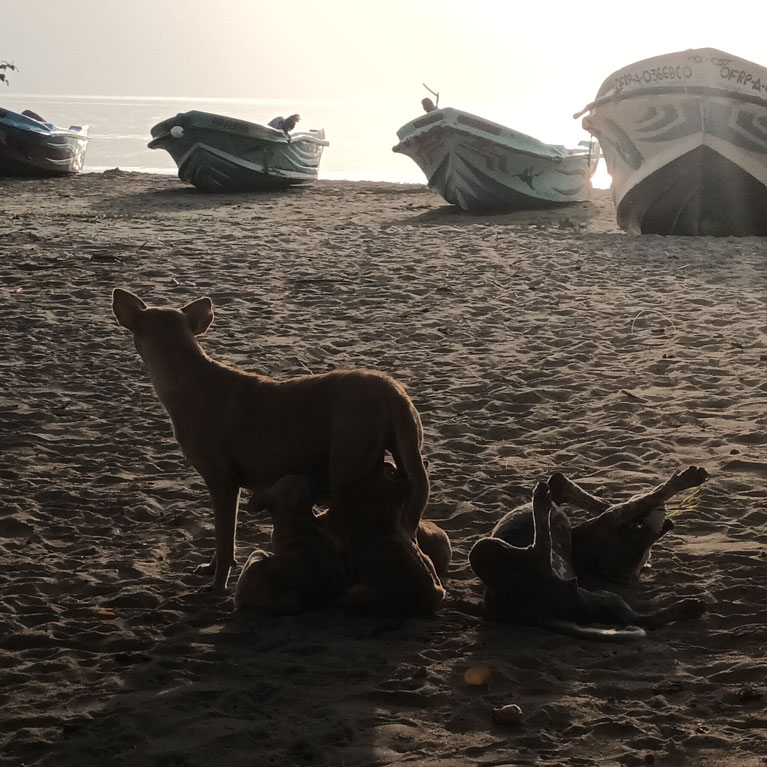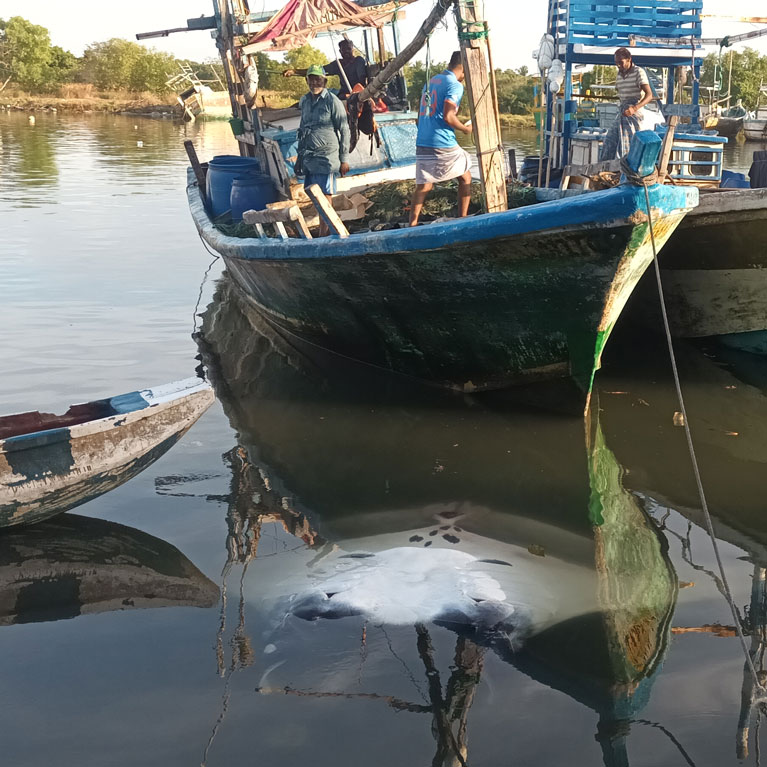The value of eDNA in avoiding shark and ray extinctions in Sri Lanka
Sri Lanka is one of the world’s largest shark-fishing nations and most of the shark and ray species landed in Batticaloa are at risk of extinction. Nimna is hoping to test the efficacy of eDNA sampling to make more comprehensive inventories of biodiversity to monitor sharks and rays and complement the existing visual surveys of these large and busy landing sites. She will compare her eDNA molecular results to visual records and refine an eDNA tool to monitor SriLanka’s artisanal fisheries. Ultimately, she hopes to improve the accuracy of species records and support sustainable fisheries management.
Having grown up in the city of Colombo, Sri Lanka, my connection with nature was often fragmented. Through the years, fireflies that filled my garden at night slowly disappeared, I saw fewer endemic civet cats, and the beach I often visited changed overnight because of an ill-informed attempt to improve it. This made me wonder about humans’ interactions with nature and all things ecological. The experiences that solidified my interest in marine ecology were snorkelling with black-tip reef sharks and scuba-diving along Sri Lanka’s east coast. When I began my undergraduate degree at the University of Leeds in...


Using eDNA for rapid monitoring of elasmobranch landing sites in Sri Lanka
Our objective is to develop a new eDNA monitoring tool for artisanal fisheries in Sri Lanka using eDNA profiles from landing site wastewater to complement observational landing records.
Fisheries landing data in Sri Lanka rely primarily on visual observation to support biodiversity assessments and to help quantify landings of species or taxa of conservation concern. Such efforts are time and labour intensive, and without properly trained experts they can lead to incorrect species identification. An eDNA monitoring approach can improve efficiency and accuracy by its rapid deployment over large areas, being less intense and verifying visual data through genetics to improve accuracy.
Most of the shark and ray species recorded at the Valaichchenai and Kalkudah landing sites in Batticaloa are at risk of extinction. Sri Lanka also has one of the largest ray fisheries in the world, but catch rates are declining. This highlights the vulnerability of recently discovered and threatened species in the area, such as the endemic stripenose guitarfish.
Environmental DNA technology offers a powerful way to monitor species by detecting DNA traces left by species in the environment. Unlike traditional visual surveys, which can miss elusive species, eDNA provides a more comprehensive species inventory. However, while eDNA is commonly used to track species in their natural habitats, its use in monitoring fisheries, especially artisanal ones, is underexplored.
Fisheries in Sri Lanka are extensive and uncoordinated. The 25,000 fishermen in Batticaloa face challenges like depleted fish stocks – the result of overfishing – and few economic alternatives. The ability of eDNA to monitor fish species without relying on fishing schedules presents a unique opportunity for more targeted conservation efforts, replacing blanket species bans with data-driven solutions that protect both biodiversity and community livelihoods.
This project aims to address these challenges by developing an eDNA tool to monitor Sri Lanka’s artisanal fisheries. This will improve the accuracy of species records, support sustainable fisheries management and contribute to better national conservation strategies that balance the needs of local communities with the protection of marine biodiversity.
- To collect eDNA samples alongside observational data using a carefully designed protocol for tropical, high-activity environments.
- To generate DNA sequences using globally recognised molecular methods, focusing on the identification of endemic, threatened and elusive chondrichthyans.
- To create a data-analysis workflow to analyse species composition, highlighting species of conservation interest, and compare molecular detections with visual records, providing tools for future research and bycatch monitoring in Sri Lanka.

